A summer camp for teenagers became a pivotal event in Hillary Waters Fayle’s life. The theme of the camp was centred around nature and environmental awareness, and something about the idea of working to protect of the natural world just clicked with her. Hillary returned to the camp for many years, first volunteering as a young person and later working there in the summer holidays while at university, and the experience inspired her to combine her love of nature with her passion for needlework.
In her art, she combines textiles and printmaking techniques with found botanical and organic material, exploring the symbolism, geometry and patterns found in nature. We need to exist in balance with nature, more than ever, and Hillary’s work perfectly represents that delicate balance, with dainty embroidery stitches worked on fragile collected leaves.
After taking an embroidery course at Manchester Metropolitan University, Hillary went on to complete a BFA at Buffalo State College and a MFA in at Virginia Commonwealth University. Today she teaches Craft and Materials Studies at Virginia Commonwealth University. Her work has been exhibited widely in the US and beyond, and is held in many public and private collections.
In this interview, you’ll discover more about how Hillary stitches fragile leaves. She also shares how she is inspired by her love of patterns and found objects, using them to highlight symbolic meanings or connections with nature.
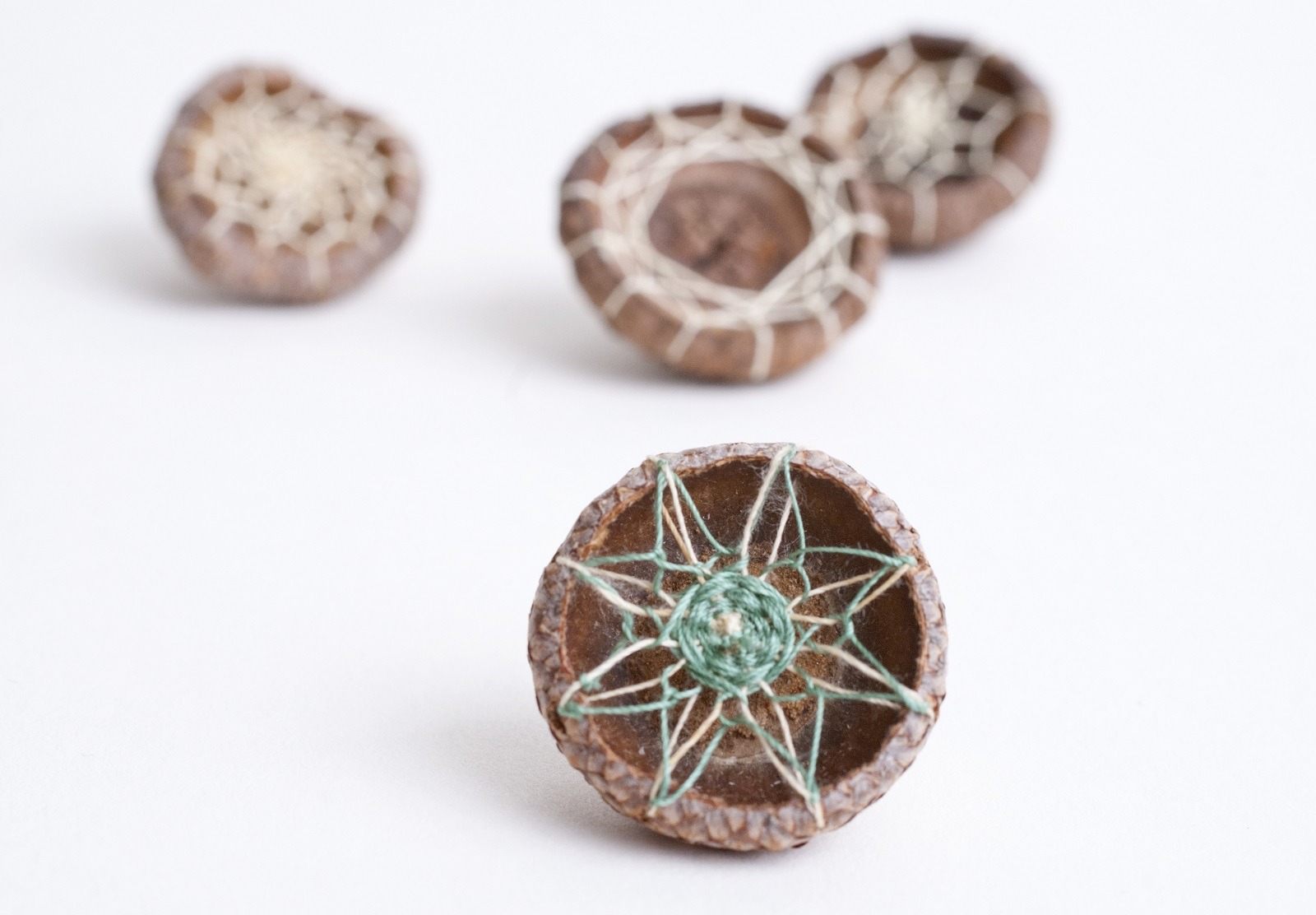
Art intertwines with nature
TextileArtist.org: What initially attracted you to textiles as a medium? How was your imagination captured?
Hillary Waters Fayle: I’ve always been interested in using textiles to add beauty to my world. When I was a child, I loved to draw but felt there was a flatness to it and I wanted to make something more dimensional. I don’t feel that way now; I think drawing is so important and stitching is another form of drawing for me.
Back then I really wanted to make tangible and usable objects. The needle and thread were very accessible and available to me. Stitching provided a way to make and embellish the textiles around me. I loved the quietness of it and the elegance of using extremely simple tools to make something very elaborate.
Fate intervened to initiate my career in textiles. When I went to university, I had my heart set on studying ceramics. But I was late for course registration and Fiber/Textiles was the only course with spaces available! I studied embroidery as an exchange student at Manchester Metropolitan University and fell in love with the intricacy of the stitch-work as well as the depth of the history of needlework and textiles.
The longer I work with textile traditions, the deeper my understanding has become, but I’m constantly reminded that all that I don’t know far outweighs what I do know! This is exciting really, because there is so much more to discover. I feel that I relate to these techniques and the history behind them in many more ways than I first realised, and I’m constantly inspired to try new things as I learn about them.
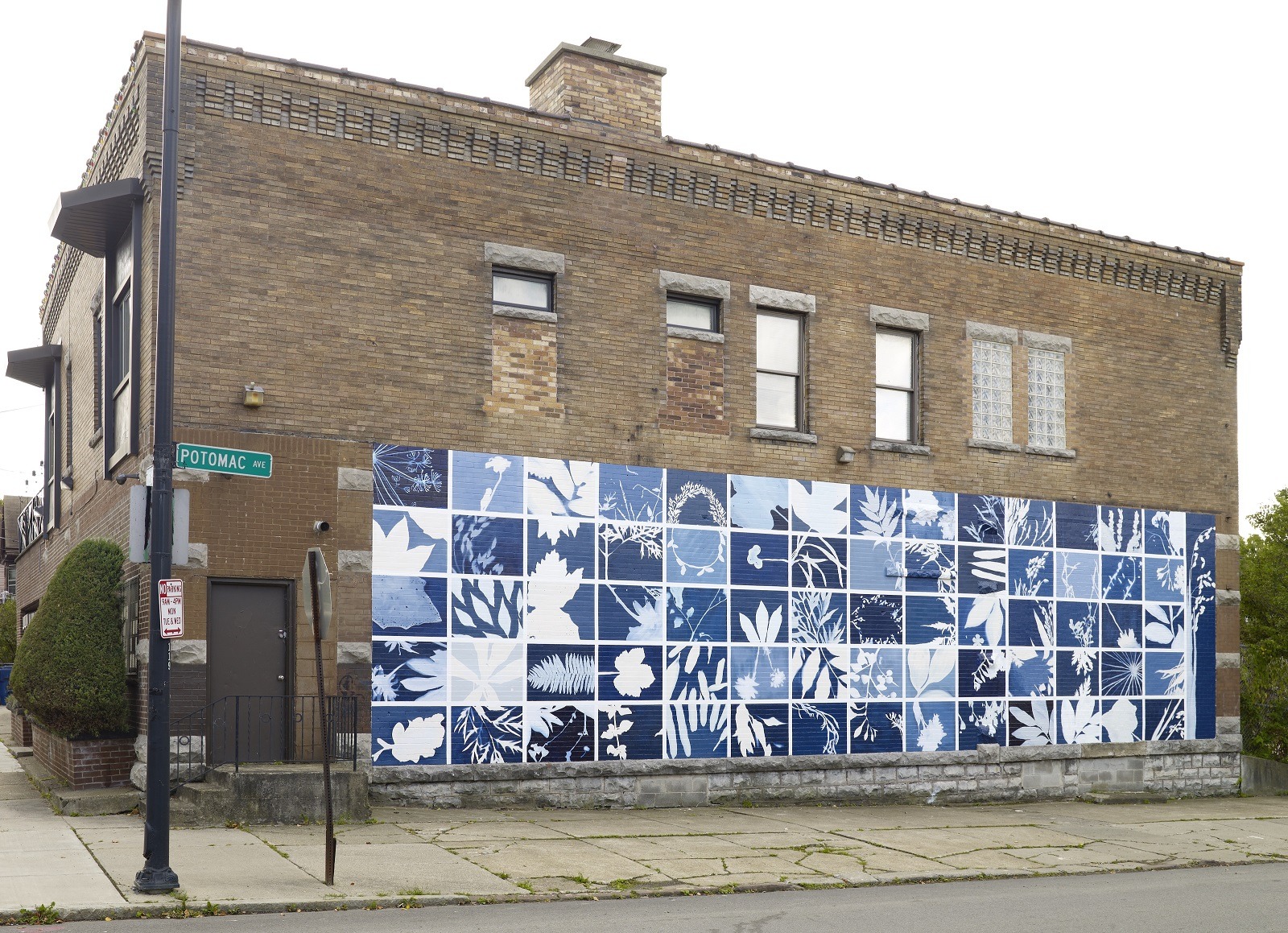
What or who were your early influences and how has your life/upbringing influenced your work?
I’m very lucky to have had a wonderful family who always believed in me and supported my artistic pursuits.
My maternal grandmother taught me to knit when I was little and both my mother and grandmother loved to garden. I think this was a big influence on me at a young age. I loved learning about nature, especially about plants, insects and birds, and this certainly is present in my work now.
I also remember being drawn to patterns as a child; I had books about Celtic knots and William Morris, and I still love and look at these designs now.
Frequently, I went with my paternal grandparents to the art museum, which had a prominent modern art collection. I absorbed a lot about art there as a very young person.
Recently, when I was selected to make a large-scale, permanent public artwork at the same museum, it felt like completing the circle. It was an incredibly gratifying experience to work as a professional artist within this inspiring place that I had revered as a child.
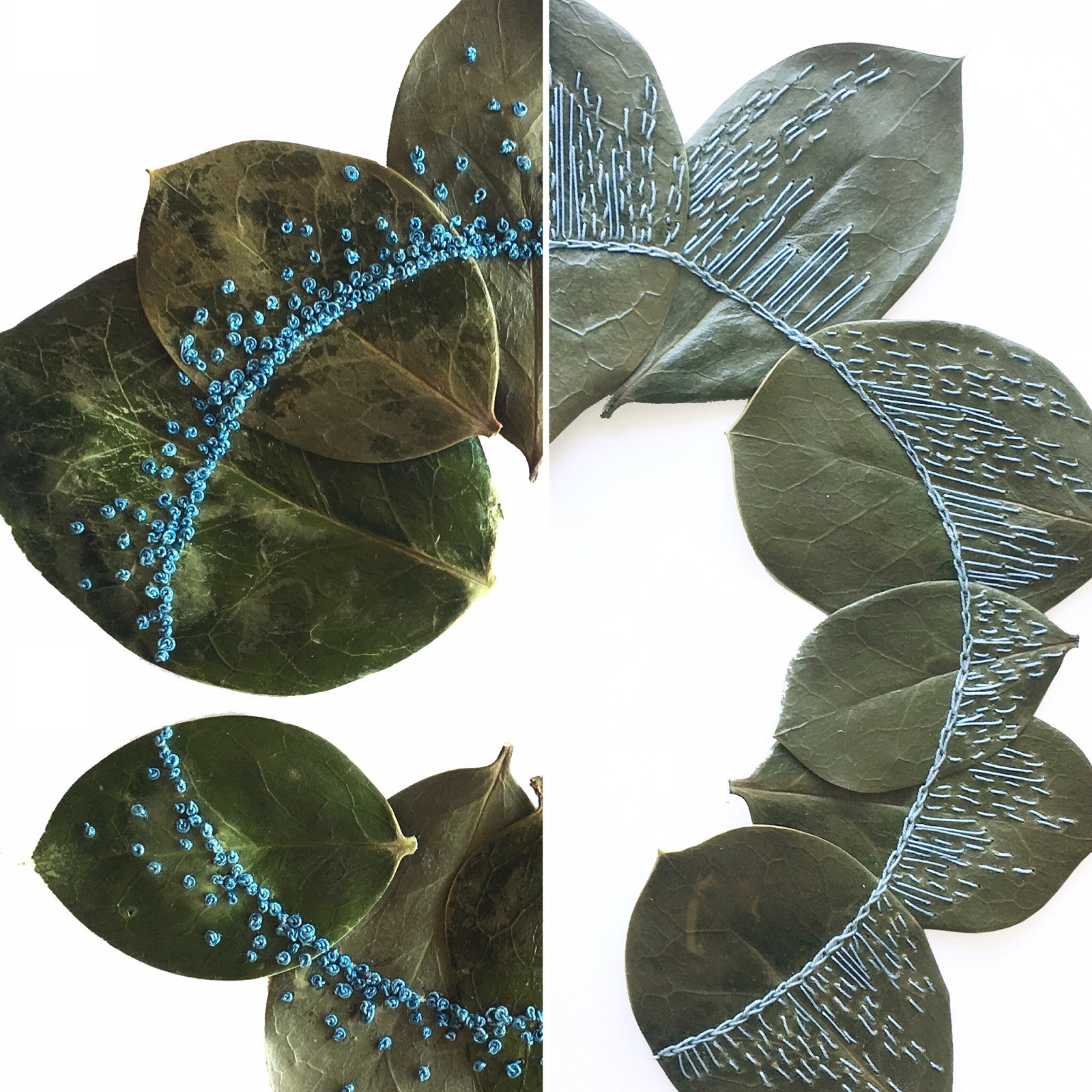
What was your route to becoming an artist?
When I was fourteen years old, I went to a summer camp which focused around environmental education and stewardship. This trip had a massive impact on my life. It became a home away from home for me, and I volunteered there in subsequent summers until I was old enough to work there. I continued to work there until I was twenty-six.
Through this work, I realised that some people, including botanists, environmental scientists, conservation officers and naturalists, devoted their entire lives to the understanding and protection of the natural world. This stuck with me and when the time came to choose what I would study at university, I was torn between pursuing environmental science and art. I received a generous scholarship to study art, and this made the decision clearer for me. I followed that path, entering university and studying textile design. Each summer, I returned to work at the camp I’d attended as a teenager.
One summer, after studying embroidery in Manchester, I returned to my summer camp job as the camp cook. During my time off, I would try to write letters and make art. I was searching for something to stitch on, and after finding nothing that interesting around me, I went outside and sat on the porch under a big oak tree. I looked up into the leaves, and the idea to try stitching on them came to me.
This was the first time I’d made something that I was truly proud of. I was able to communicate the ideas that were important to me and the process combined my love of art and needlework with passion for nature.
I soon graduated from university and afterwards, I continued to explore this work and while working part time as a substitute teacher in a high school. I spent two years building a portfolio, applied to graduate school, and attended Virginia Commonwealth University where I received a Master’s degree in Craft and Material Studies. I don’t think you need lots of education to make good art, but in my case, it felt like the push I needed to believe in myself and what I was doing, and to take my work to the next level.
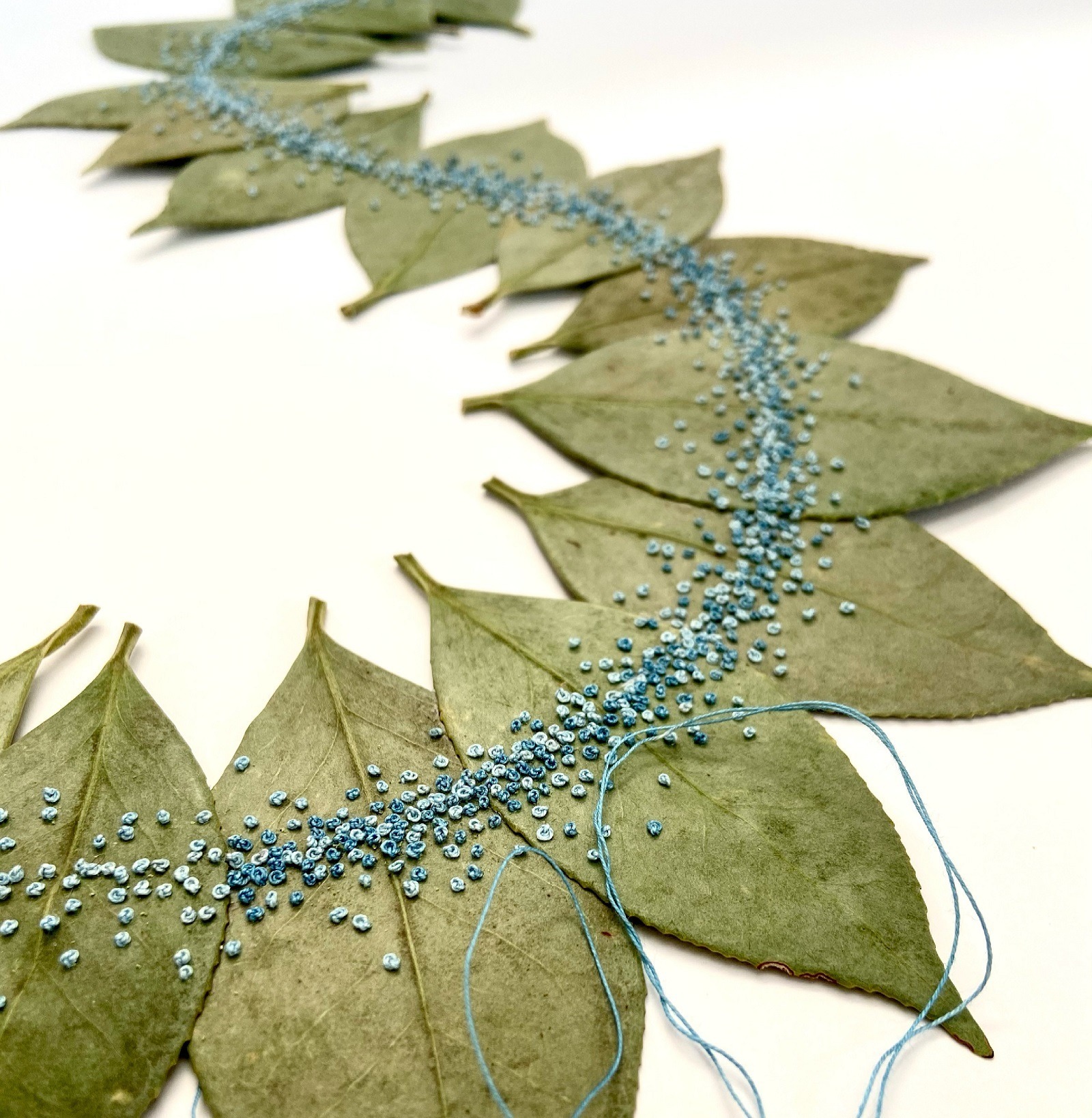
Stitching leaves
Tell us about your process from conception to creation
First I collect my material by going outside and taking a walk through my yard, the neighbourhood or local park. I collect a few leaves from trees and plants, never taking too many from one plant. I see them as gifts, and I feel the need to accept and collect them respectfully.
I take them back to my studio and consider what I’ll do with them; each leaf is different and I react to them individually. I either work with fresh leaves, or dry them to use in the future. This depends on the species and what I intend to use them for.
I begin by drawing some ideas in my sketchbook. Drawing is an important part of my process and I try to draw as frequently as I can. Once I have a plan, I usually map out what I want to stitch before I start. When they are stitched, I usually press them again. This releases any remaining moisture evenly, which will help to preserve them.
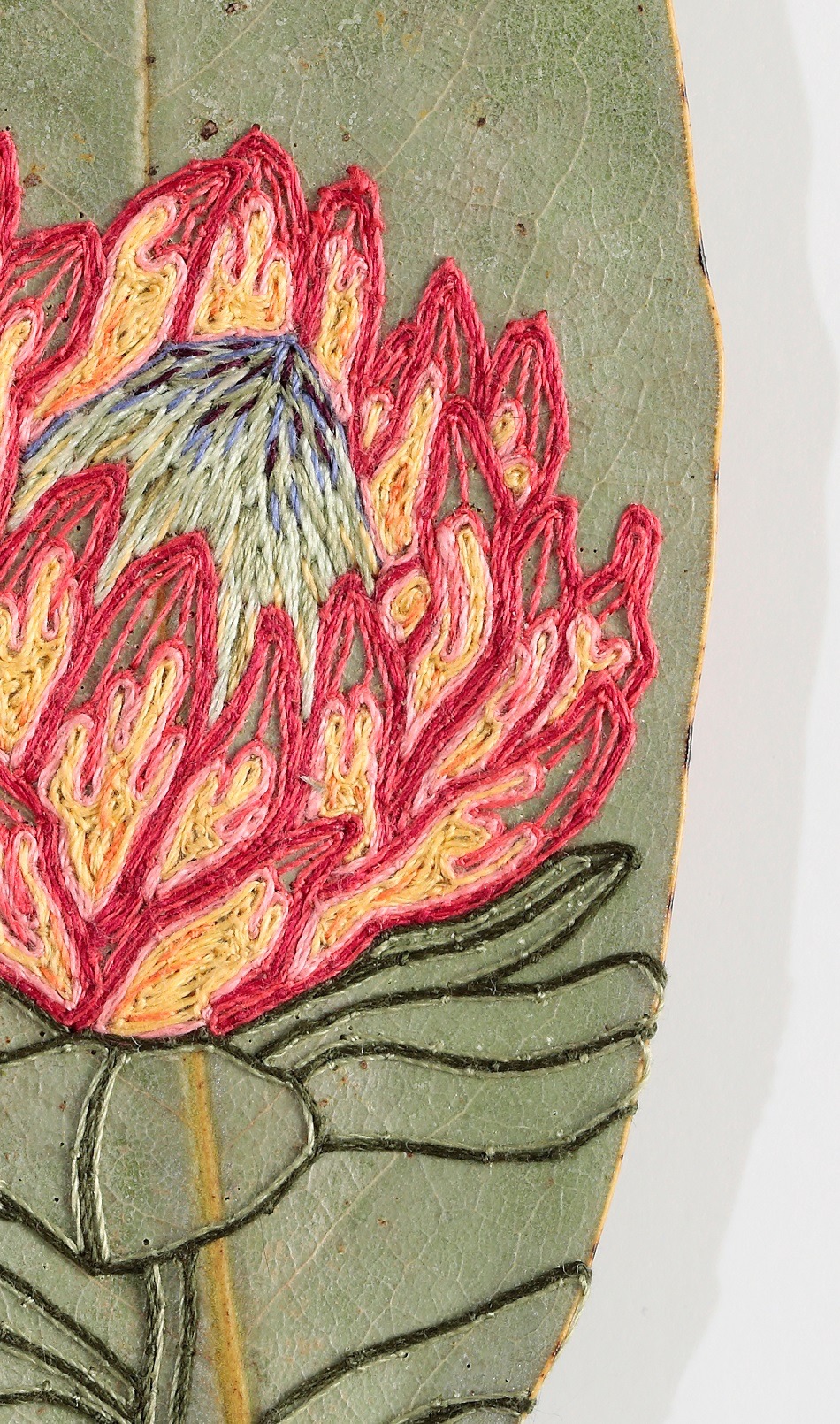
Tell us a bit about your chosen techniques and how you use them
I work with lots of different techniques, but in the beginning, I used insertion stitches or joining stitches. I fell in love with these stitches while I was at Manchester Metropolitan University. Their intricate and elaborate functionality was the perfect solution for what I wanted to do, which was join things together, both physically and conceptually. I wanted to establish and uplift the connection between nature and the human hand. Insertion stitches provided a technical solution, as well as touching on what’s at the heart of my work: connection, repair, and wonder.
Now I mainly use couching, primarily because of the relatively small amount of punctures it takes to hold a thread in place, but also because it allows for very crisp angles to be stitched onto a material that can’t always withstand high thread tension.
In my work at Virginia Commonwealth University, I’m always engaged in research for lectures and presentations and I am constantly learning; there are so many stitch families and materials I’m excited about exploring in the future.
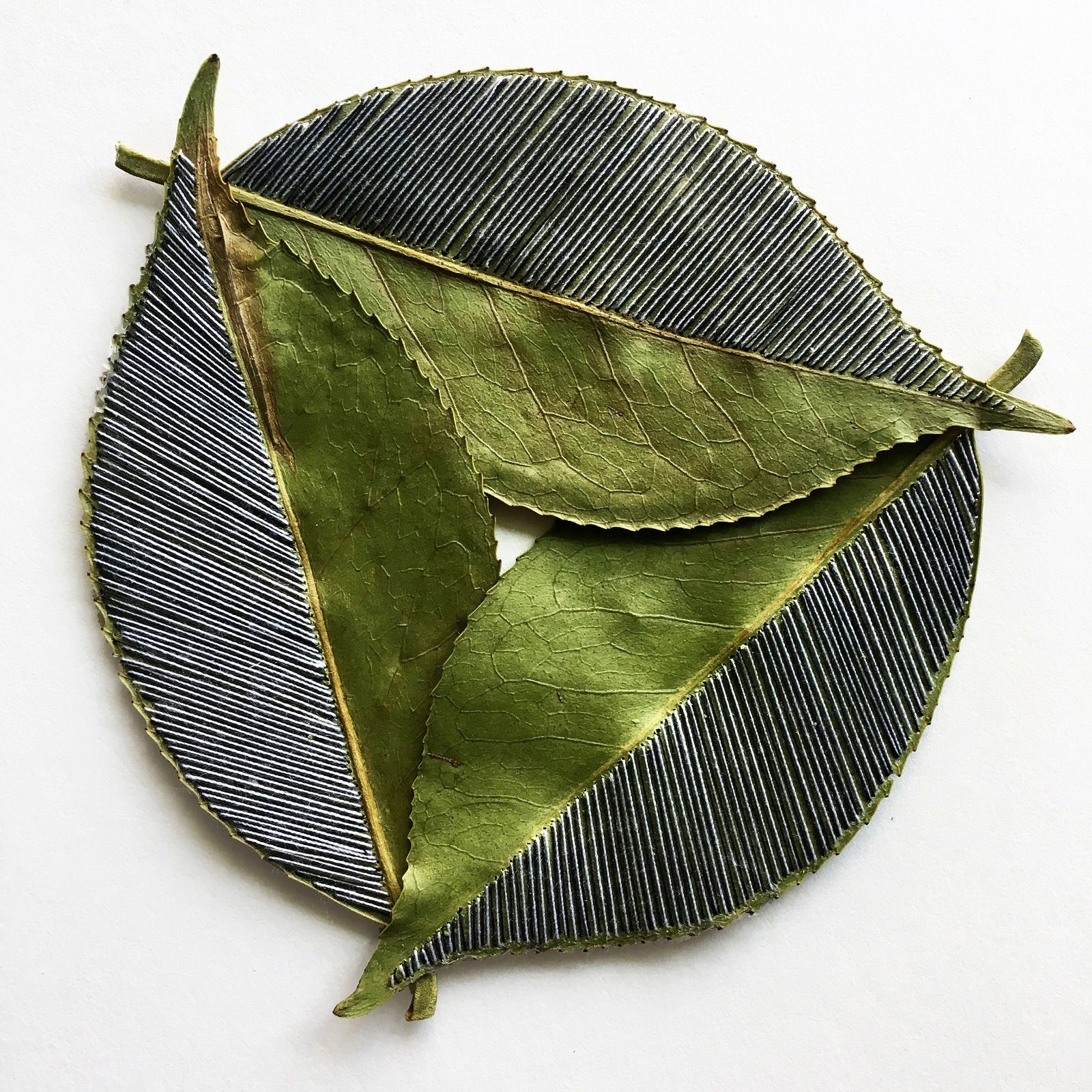
What currently inspires you?
So much inspires me! I love looking at other artists’ work, including the work of textile artists, needleworkers, printmakers, illustrators, painters and graphic designers.
I’m very interested in historical textiles and learning about textile history. The incredible traditions of making that have been passed down through the centuries is endlessly fascinating to me.
I still love all kinds of pattern designs, botanical illustrations and natural objects like feathers, stones, eggshells or fossils. Recently I’ve been very inspired by sacred geometry and the overlapping of geometric shapes with patterns found in nature. I’ve been curious about tracing these patterns and symbols back to their connection with nature or the land.
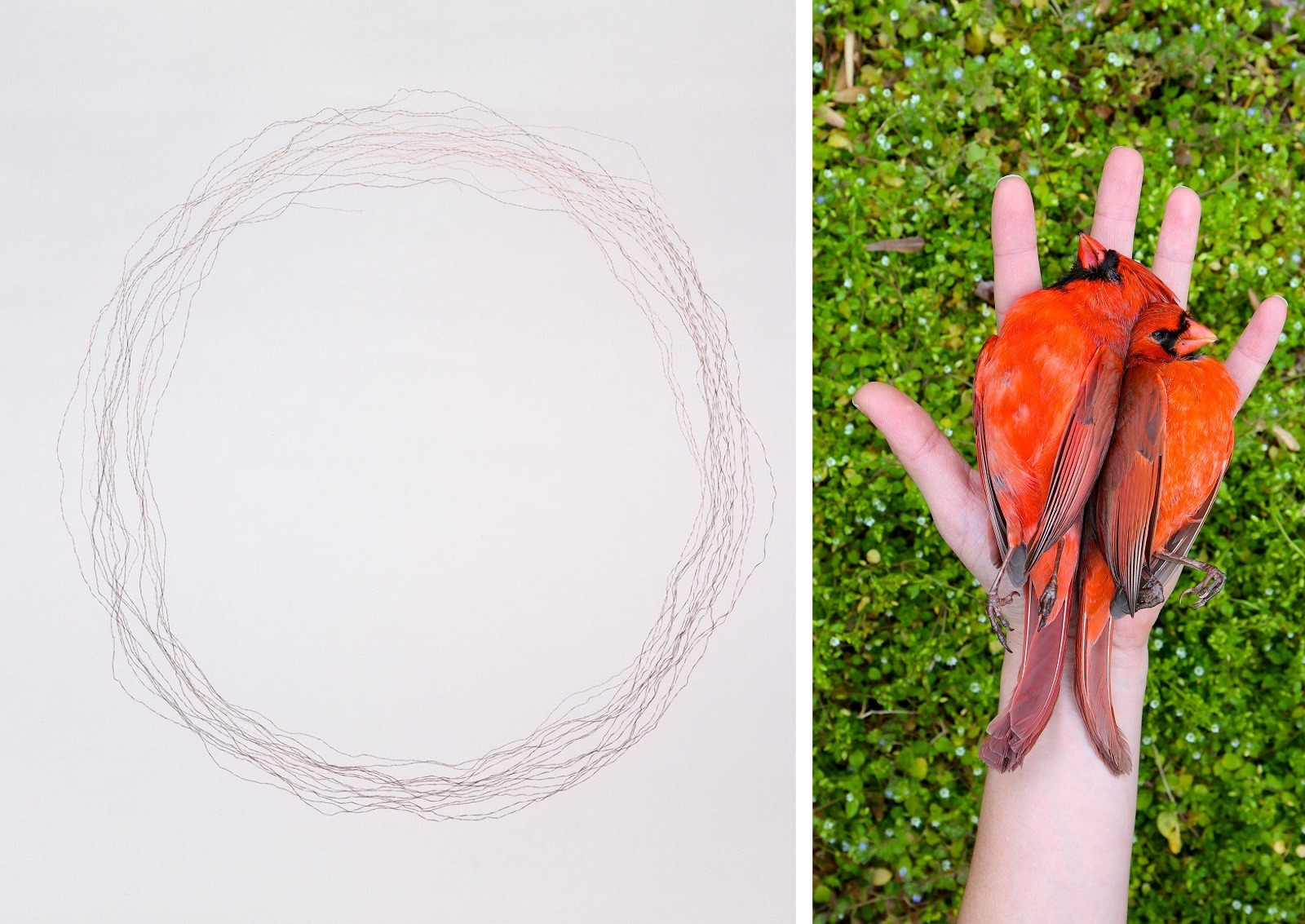
The significance of Northern Cardinals
Tell us about a piece of your work that holds particularly fond memories and why?
The first leaf I ever stitched comes to mind, because it was a breakthrough into a new way of making art that was actually meaningful to me. It’s not particularly incredible, and it now seems comparatively rudimentary, but it’s certainly symbolic of a turning point for me.
Another piece that holds special meaning is called “Return to depart” and it’s actually not stitched at all. It’s a work on a large piece of paper (139cm x 139cm) made with feathers from a Northern Cardinal. Although these birds are plentiful on the East coast of North America, there is a belief that when you see one, it’s a greeting from a loved one who has died.
Right before I made this work, I had recently lost a dear friend and my grandmother, and was deep in a state of grief. I was out for a morning run on Christmas Day and in the snow on my path was a bright red Cardinal. It was dead, but still incredibly beautiful. I don’t really know what came over me, but I decided to pick it up and carry it with me on the remainder of my run; It felt like a gift or a message. I had never seen a dead cardinal before and it seemed important.
Less than a month later, as I was dropping a friend off at the airport, I found another Cardinal bird on the side of the road. I picked him up and took him home, too. Again, it felt symbolic.
I took all the feathers from one of the birds and using tweezers, I pulled out each individual thread from each individual feather, dipped it into glue and laid it on the paper. I created one giant, looping line, a circle that ended where it began.
The entire bird was transformed into a cyclical, never-ending flight path. It seemed to speak to my grief and the transformation that happens when you lose someone; they leave the physical realm, but they remain present in other ways, transformed, but still present. The lines are not stitched, but they do have a strong textile sensibility, and they resemble running stitches, which is an association I enjoy.
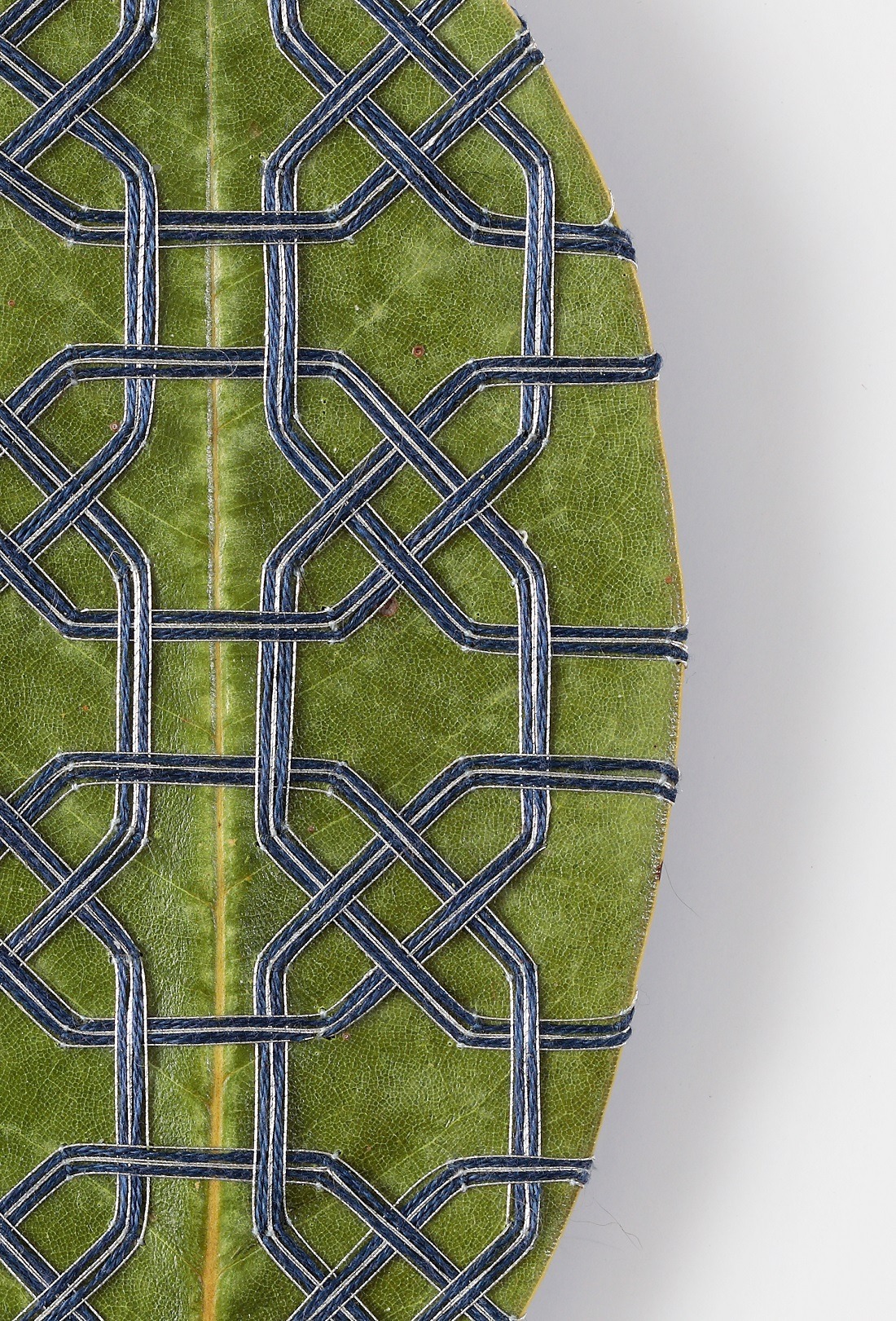
How has your work developed since you began and how do you see it evolving in the future?
I think I’ve come leaps and bounds from where I began, not only in the technical aspects of what I’m able to do, but also in the way that I relate to what I’m doing.
Time has given me experience; learning about the materials and techniques I’m working with makes everything richer and more meaningful.
But there is so much more to discover, so I’m sure that things will continue to evolve. I hope to dive deeper into what I’m doing now. I have lots of ideas to explore and just haven’t had the chance to do so, yet. I’d really love to work on a bigger series of pieces and work with different leaf species from around the world.
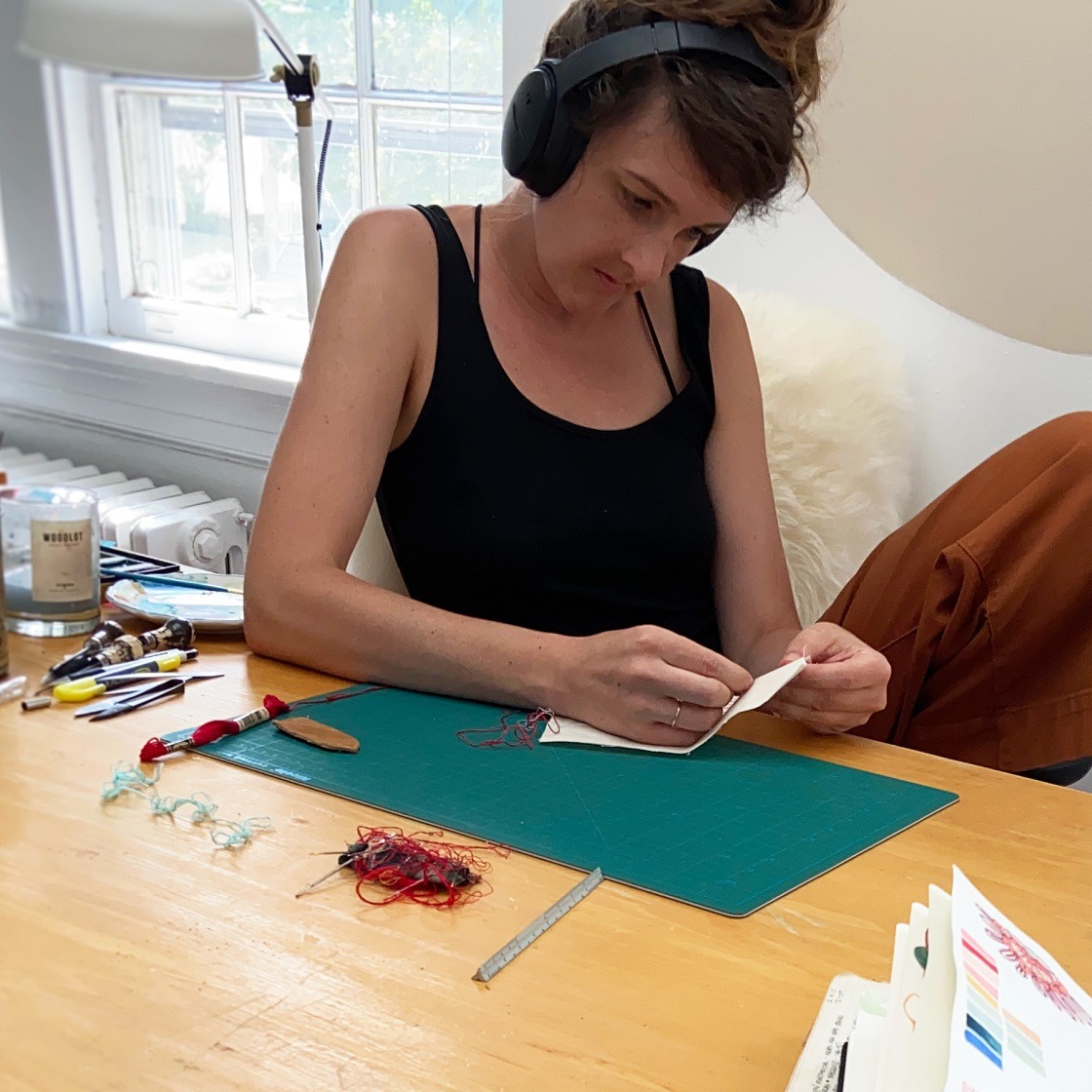
For more information visit www.hillarywfayle.com
If you enjoyed this article, why not share Hillary’s beautiful stitched leaves with your friends using the buttons below.
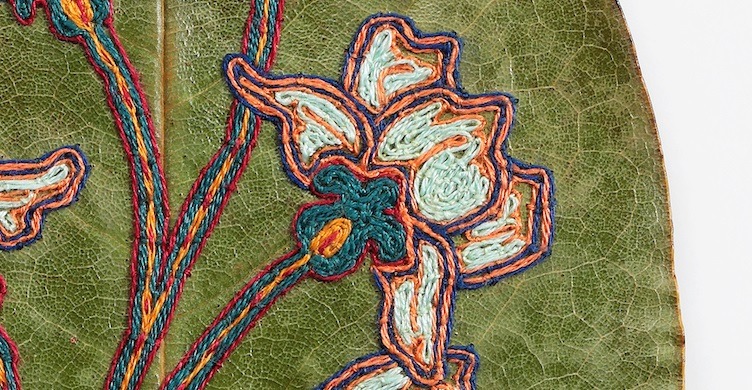

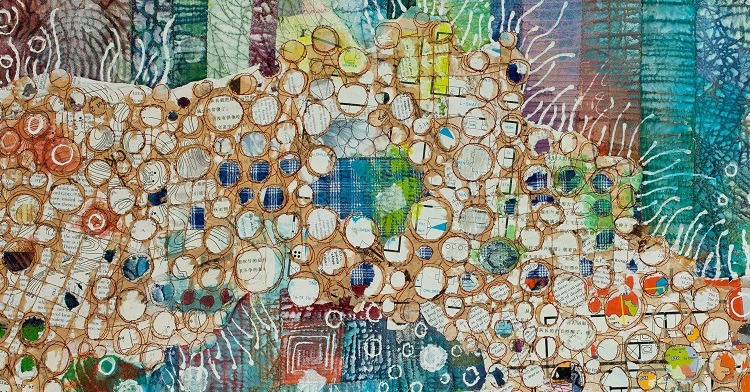
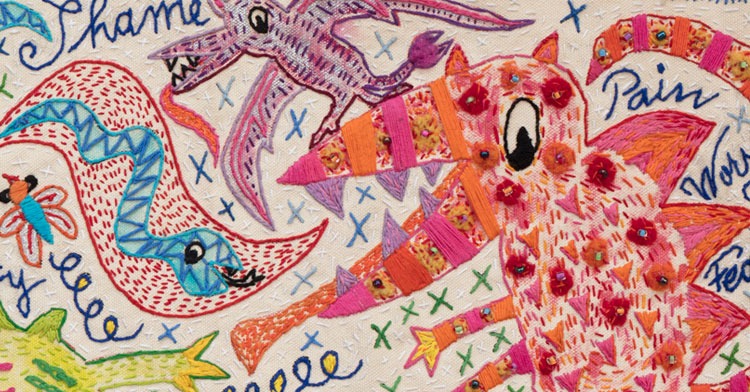
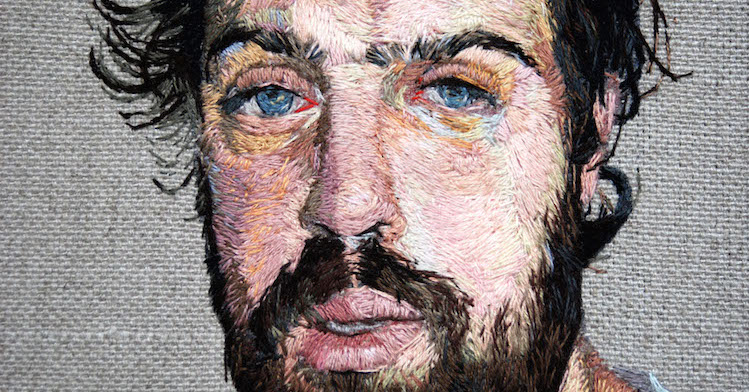
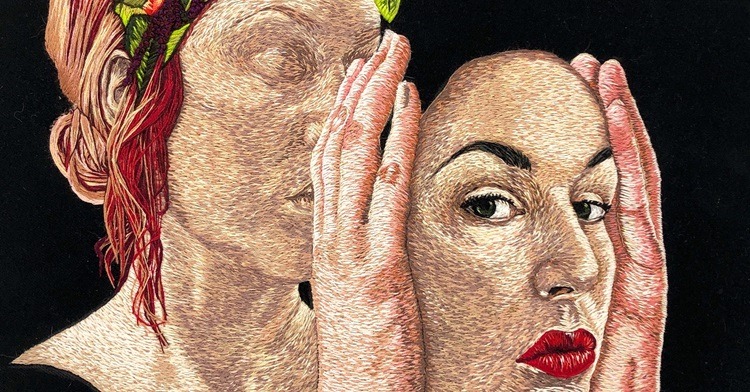
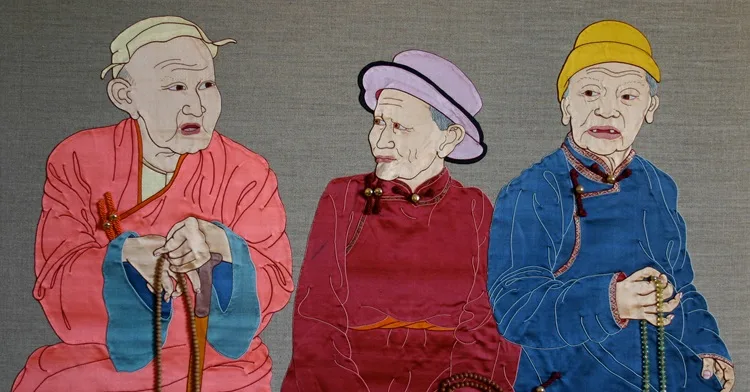
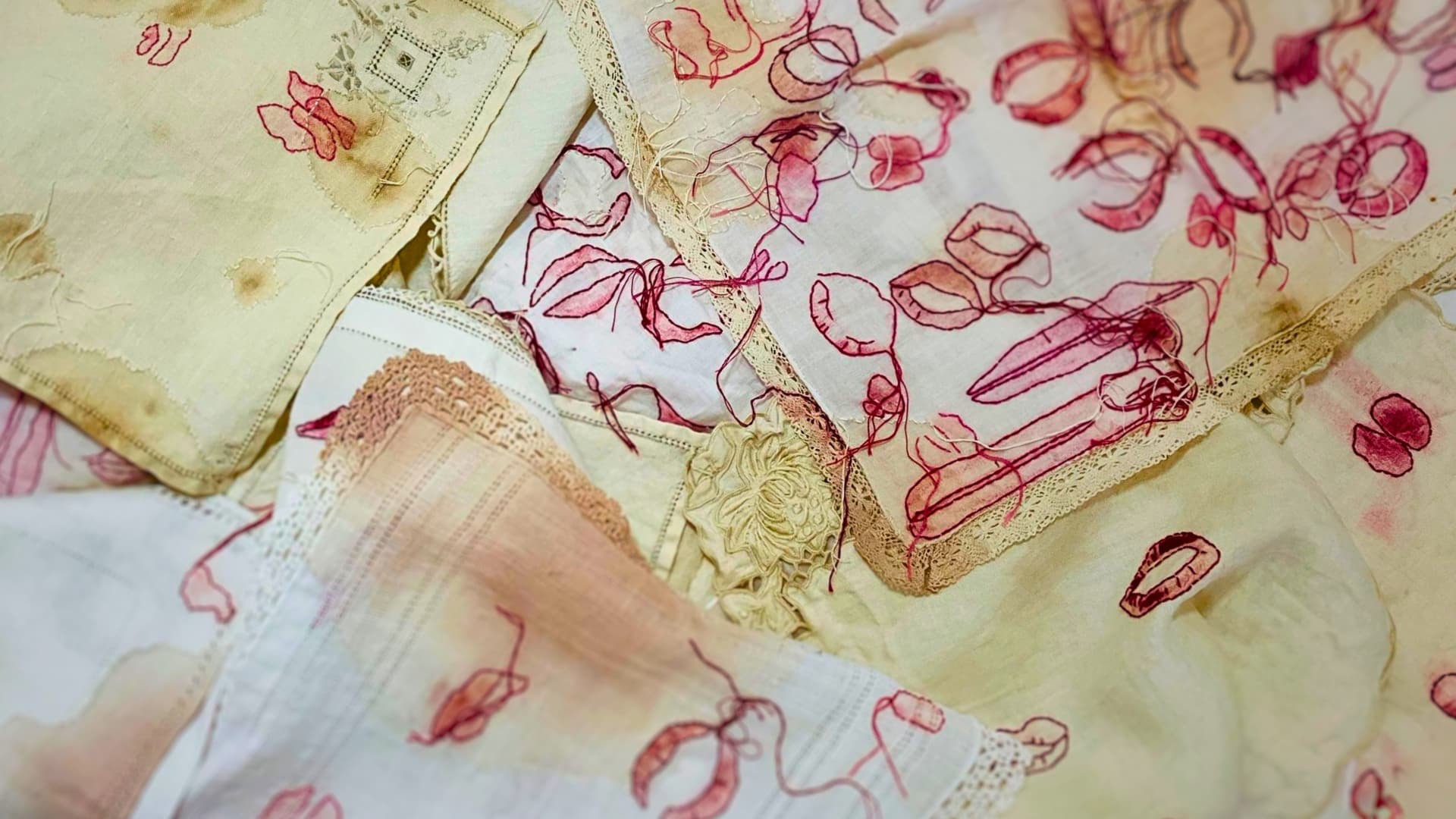
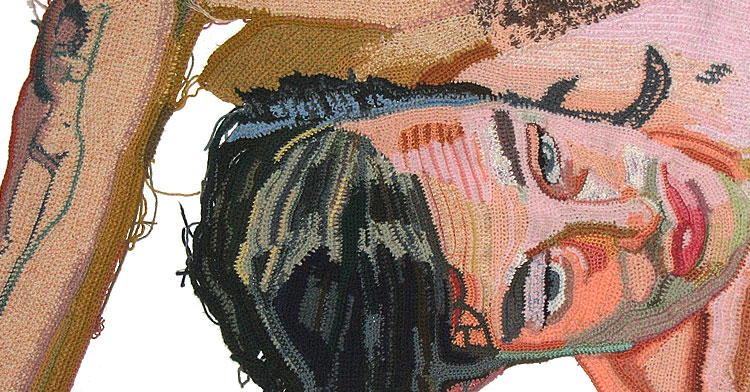
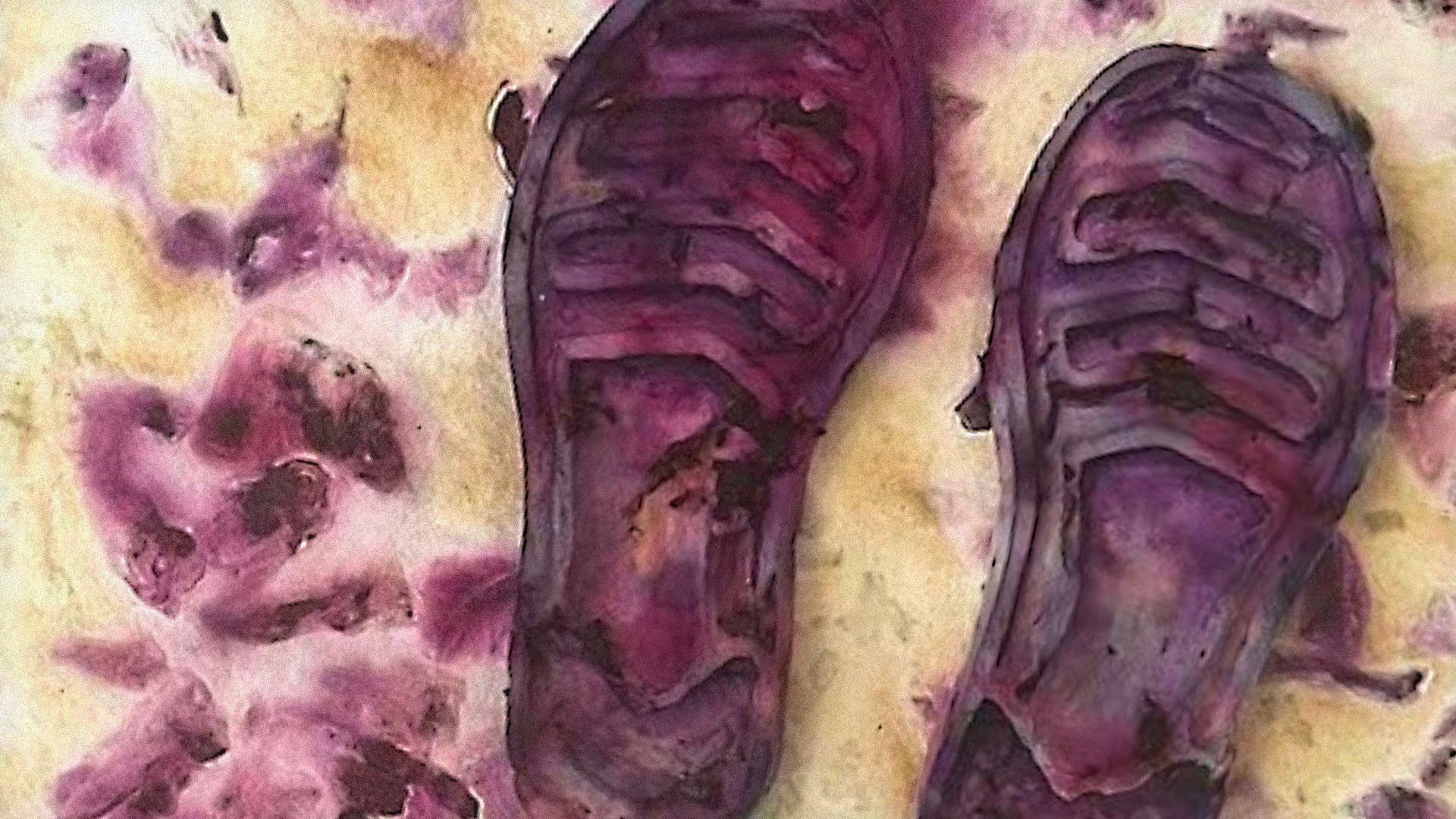
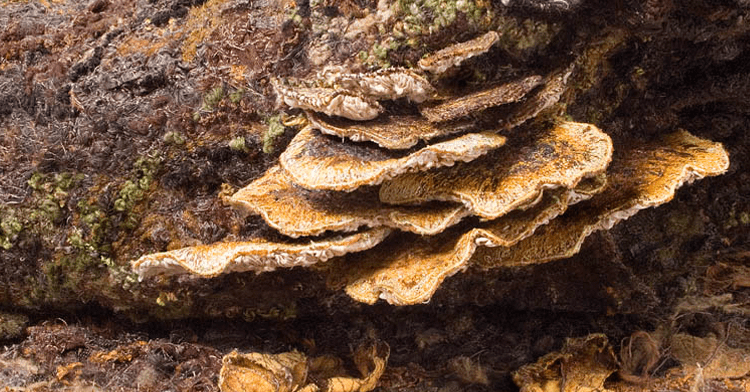
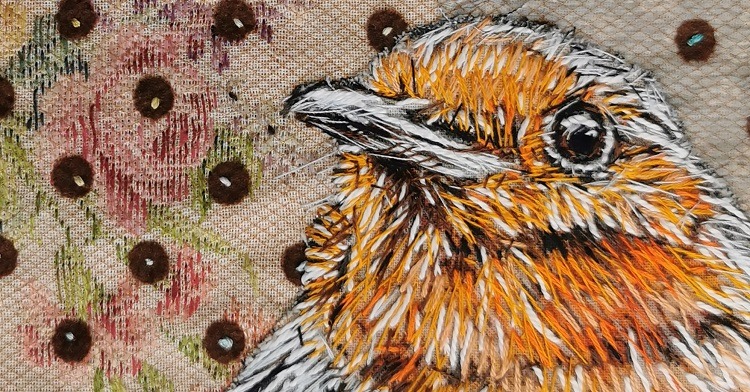
8 comments
Adrianne Hunt
I wonder the same thing about the leaves drying out and becoming brittle, whether already stitched and being preserved or waiting for the stitching process to begin. Are they preserved in glycerin or some other product which would make them pliable and more able to withstand needle & thread tension?
Also, is the thread used common crafts store embroidery floss, or a more custom type? Is any other medium used other than floss – ribbon, wool yarn, gold thread? Have you tried trapunto or stumpwork?
Your work and designs are gorgeous. Embroidery is always such a meditative endeavor. Love seeing new ideas.
Jacki Biller
How are you able to stitch the leaves without tearing them?
Becky Breshears
I am really curious about how the leaves hold up with the embroidery over time. It would seem to me that they would dry and break? How are they treated? Are there tips to getting them to accept the thread and needle without breaking. the leaves apart….and do they dry out over time?
Jana
Thank you so much for including a photo of the artist herself. This adds something special to the interview. Perhaps consider including artist photos in future interviews. Amazing process – this stitching on leaves. I’ve collected and scanned leaves for years, but didn’t think it possible to stitch on them. Now I see otherwise!
Chris R
I have admired Hillary’s work for several years. It’s amazing!
I too am an alumnus of Buffalo State College…go Bengals!
Pamela Clark
I am struggling to get started. I have some lovely pieces of linen & fabric & some different threads (even some Shashiko). I live in Australia & was wondering about how when & how much your on line workshops are.
I am getting into my senior years but just yearn to do something. The Jean Draper stitching on linen was very appealing. Thank you for wonderful newsletter.
Adrianne
Pamela – Have you checked out the Inspirations magazine that’s based in Australia? They have gorgeous pictures and ideas of all types of things – frameable patterns, blankets (or “rugs” as they’re called there) pincushions, purses, etc. Might give you the push needed to start something. Also try searching for patterns of different type threads – ribbon, floss, wool yarn, which can lead to all sorts of p nowatterns to use for ideas. Patterns in cross-stitch, needlepoint, crewel, ribbon, gold thread, threadpainting (have seen it used as one and two words) can be used for inspiration. So many designs can get overwhelming sometimes, but if you pick a small one to start you may find it easier to do a larger one. Small ones always led me to larger things – a pincushion to a pillow for instance.
Joe
Hi Pamela
Thanks so much for your comment. Yes – the Jean Draper workshop we currently hosted inside Stitch Club was really inspiring – the members loved it. All of our online textile art workshops are now run inside Stitch Club, our private membership. There’s a huge library of archive workshops to choose from, plus two new workshops added every month with some brilliantly inspiring artists. We only open registration to join a couple of times a year, but were do have a registration period coming soon. If you’d like to stay informed, make sure you sign up to the waiting list here: https://training.textileartist.org/stitchclub-closed/ All the best, Joe